Casey Meisner
Over the past year, the Mets have made a number of trades to not only help them go to the World Series last year, but also to help them become World Series contenders again this year. With Neil Walker returning to Pittsburgh to not one but two standing ovations, and the draft scheduled for later today it seems like today is a good day to take a cursory view of how the players the Mets traded away are faring.
Kelly Johnson & Juan Uribe for Robert Whalen & John Gant
Robert Whalen – Whalen has made 11 starts for the Atlanta Braves AA affiliate going 4-4 with a 2.88 ERA and a 1.247 WHIP. At the time of the trade, Whalen was seen as a back of the rotation starter, and his performance this year should not change those impressions.
John Gant – Despite never having pitched above AAA before this season, Gant got a cup of coffee early on with the Braves showing off his very unorthodox delivery. He predictably struggled pitching to a 6.17 ERA and a 1.714 WHIP in seven appearances. Gant was sent back down to AAA where he has pitched better. In eight appearances, he has a 3.14 ERA and a 1.233 WHIP. He appears on track for another promotion before the year is over, especially with the way the Braves want to sell everything.
Tyler Clippard for Casey Meisner
Casey Meisner – The 20 year old Meisner pitched well for Oakland’s Advance A affiliate pitching going 3-1 with a 2.78 ERA and a 1.052 WHIP in seven starts. This year, for the first time in his brief career, Meisner is struggling going 0-9 with a 4.55 ERA and a 1.645 WHIP in 11 starts. At 21, Meisner is still young for his league, and he is still walking too many batters. If Meiser can make the ncecessary adjustments, he can get back on track to being the mid to top of the rotation starter he was projected to be.
Yoenis Cespedes for Michael Fulmer & Luis Cessa
Michael Fulmer – Fulmer only received three AAA starts before the Tigers felt compelled to bring him up to help fix a beleaguered rotation that included former Met Mike Pelfrey. Fulmer has shown himself to be every bit the ace people anticipated he might be one day. He has gone 6-1 with a 2.83 ERA and a 1.175 WHIP. In his last four starts, he is 4-0 with a 0.32 ERA and a 0.635 WHIP.
Luis Cessa – Cessa was actually traded to the Yankees in the offseason, and he made his major league debut with them. In his three appearances, he had a 2.57 ERA and a 0.857 WHIP. In the minors, he has been in the rotation with less success. In his five starts (with one relief appearance), he is 0-1 with a 4.50 ERA and a 1.214 WHIP. Ultimately, Cessa has the stuff to be either a back end of the rotation pitcher or a middle reliever. His brief cup of coffee with the Yankees has shown he does have the ability to pitch in the majors.
Eric O’Flaherty for Dawrin Frias
Dawrin Frias – After the conclusion of the 2015 season, Frias become a minor league free agent. To date, no one has signed him.
Addison Reed for Miller Diaz & Matt Koch
Miller Diaz – Diaz is struggling mightily for the Arizona Diamondback’s high A affiliate going 0-1 with a 7.76 ERA and 2.414 WHIP in 15 games (inlcuding three starts). Diaz was seen as nothing more than a major league reliever, at best, and these statistics make that proposition a stretch.
Matt Koch – Koch is having another strong year in AA. In his five starts, he is 0-2 with a 2.66 ERA and a 1.310 WHIP. While Koch was seen as a bullpen piece, if he keeps improving the way he has, he may have a shot to stick with the back end of someone’s rotation.
Neil Walker for Jon Niese
Jon Niese – Niese’s early season struggles have seemed to go by the wayside. While he started the year 3-1 with a 5.94 ERA and a 1.680 WHIP, he has settled down and pitched much better of late. We just saw him pitch seven innings in beating the Mets. In his last six starts, he is 3-1 with a 2.15 ERA and a 1.141 WHIP.
For the most part, the players the Mets traded are playing well. It shows the Mets gave up valuable pieces for the quality players they received. The hope is the Mets have enough trade assets this year to swing a deal or two like they did last year.
For the second straight year, the Mets entered the season with questionable depth. The result of the questionable depth last year was the Mets were forced to raid their minor league pitching depth to build a bench and a bullpen. Overall, the Mets traded away Robert Whalen, John Gant, Casey Meisner, Michael Fulmer, Luis Cessa, Dawrin Frias, Miller Diaz, and Matt Koch. The end result was a National League Pennant and only one player under contract beyond 2015.
The Mets had the whole offseason to make sure that didn’t happen again. They didn’t. The team decided not to re-sign Kelly Johnson, and they waived Ruben Tejada. The end result was the Mets started the year with Eric Campbell on the 25 man roster. Keep in mind, the 2015 Mets which supposedly had less depth had Campbell in the minor league system.
Unfortunately, Campbell did not reward the faith the Mets placed in him. Campbell hit .159/.270/.222. The Mets were forced to move on from him. Next up was Ty Kelly, who the Mets signed to a minor league deal over the winter, and Kelly hit .111/.200/.111. Another option was Matt Reynolds, who is still up with the team, who is currently hitting .167/.231/.167. By the way, the Mets have now made it readily apparent they are not going to give T.J. Rivera a shot. Long story short there are kiddie pools with more depth than what the 2016 Mets had this season. Accordingly, the Mets were in a position where they were forced to make a move to improve their depth.
Today, the Mets traded away Akeel Morris for Kelly Johnson. This is the same Kelly Johnson the Mets thought Eric Campbell was better than in the offseason. This is the same Kelly Johnson who is currently hitting .215/.273/.289 this year.
Again, the Mets could have signed him in the offseason and not forfeited a prospect in return. Either the Mets thought Campbell was a better player and were wrong, or they made a money decision. There is roughly a $1.5 million difference between Campbell’s and Johnson’s salaries, and the Mets did release Tejada before the season in an effort to save money. Keep in mind, the Mets not only obtained Campbell in the deal, but as per Jon Heyman, the Mets also received some money in the deal as well. Because of the Mets penny wise pound foolish decisions, the Mets once again had to dip into their minor league system to address their poor depth.
This time the cost was Akeel Morris. Last year, Morris was terrific in his 23 appearance in AA. He went 0-1 with a 2.45 ERA and a 1.091 WHIP. This year, for the first time in his major league career, he is struggling. In his 22 appearances, he is 2-2 with a 4.62 ERA and a 1.382 WHIP. Lost in those stats is Morris’ stuff. He can get his fastball up to 95, and he has a good changeup. With his ability to strike people out, he could have been a late inning reliever. With the development of another pitch, like the Warthen slider, he would be. If he does reach his potential, it will be with another organization as the Mets decided they desperately needed someone who is hitting worse than Kevin Plawecki this year.
Regardless of his struggles, Johnson is an upgrade over what the Mets have been playing lately. Johnson may also benefit from returning to a team where he played well last year. If Johnson does play well, it’ll be a reminder the Mets should not have let him sign elsewhere in the offseason. It will be a reminder that the mistake the Mets made a mistake in thinking Campbell was the best choice for the bench. Ultimately, the cost of that mistake is the career of Akeel Morris.
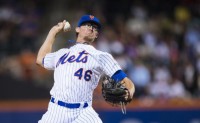
Last year, when the Mets had delusions of grandeur that the worst offense in Mets history could go to the World Series, the Mets traded for Tyler Clippard. In exchange for two months of Clippard, the Mets have up Casey Meisner, who was a well regarded prospect.
Initially, Clippard delivered for the Mets. Up until his back injury, Clippard pitched very well. From July 28th to September 16th, Clippard made 26 appearances pitching 26.1 innings. In those innings, he had a 2.73 ERA with a 1.03 WHIP limiting hitters to a .182/.257/.364 batting line. In short, he combined with Jeurys Familia to make it a seven inning game, which is all the more frightening for opponents when you consider the Mets pitching staff.
Apparently, despite the Mets adding a couple of relievers, they are still interested in Clippard, but only on a one year deal. I don’t get it. Yes, Clippard had the worst year of his career last year. However, in the midst of that year, the Mets traded away a promising young starter. Now, the Mets don’t have to give up any young players. Instead, they only have to give Clippard an extra year. They’re balking at that second year. It doesn’t make sense.
Keep in mind, the Mets just handed Antonio Bastardo a two year $12 million contract. Bastardo turns 31 in September. For his career, Bastardo has a 3.58 ERA, 109 ERA+, 1.198 WHIP, and an 11.0 K/9. Last year, Bastardo pitched 57.1 innings in 66 appearances. He had a 2.98 ERA, 129 ERA+, 1.134 WHIP, and a 10.0 K/9.
Clippard turns 31 in two weeks. For his career, he has a 2.88 ERA, 138 ERA+, 1.089 WHIP, and a 9.8 K/9. Last year, Clippard pitched 71.0 innings in 69 appearances. He had a 2.92 ERA, 134 ERA+, 1.127 WHIP, and an 8.1 K/9.
Looking at the numbers, Clippard is a better reliever than Bastardo. Furthermore, Clippard established he could not only pitch well in New York, but he could also pitch well as the main set-up guy in a pennant race in New York. With that said, the Mets should offer Clippard the extra year, like they did with Bastardo, and get the deal done.
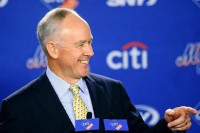
Here’s a question for you. If you had a GM that gave a bad contract to a 35 year old, forfeiting a pick in the process, and depleted it’s farm system of its top end starting pitching prospects for rentals, what would you call that GM? Apparently, you call Sandy Alderson the Executive of the Year.
Before proceeding, I’d like to note Alderson has generally done a good job with the Mets. The R.A. Dickey trade was a stroke of genius. However, that happened three years ago, and this is a 2015 award.
Alderson made two major league free agent signings for the 2015 season. The first was Michael Cuddyer. It was immediately panned by everyone. Alderson was out-maneuvered there by the Rockies of all organizations. With the Mets all but declaring they were signing David Wright‘s friend, the Rockies gave Cuddyer a qualifying offer. The Mets then gave Cuddyer a two year $21 million contract. Cuddyer was hurt, and he regressed as 35 year old players do. He’s now a $12.5 million bench player.
The other free agent deal was John Mayberry, Jr. Mayberry hit .164/.227/.318. He was released at the end of July. Overall, Alderson’s free agent acquisitions were complete busts.
His trades weren’t much better. Do you realize for a team touted with organizational starting pitching depth, Alderson depleted much of it. He traded eight minor league arms in total. For all the pitchers that were traded, Addison Reed is the only player the Mets could keep in 2016. By the way, Reed is a non-tender candidate.
Yes, the Mets made the World Series. They also lost it. For all the moves and sacrificing the future, the Mets still fell short. Further, it does not appear the moves generated enough revenue to sufficiently increase payroll. In the end, the Mets have up two big pitching prospects for rentals. If you’re saying it was worth it, I ask you if John Smoltz was worth it?
In 1987, Smoltz was traded for Doyle Alexander. Alexander went 9-0 with a 1.53 ERA for the Tigers. His fantastic run certainly mirrors the run Yoenis Cespedes had this year. Like the Mets, the Tigers won their division. Like the Mets, the Tigers didn’t win the World Series. The Tigers lost out on a Hall of Fame career. Time will only tell with Michael Fulmer. However, we do know he’s a highly rated prospect the Tigers believe can contribute very soon.
It’s the reason I said it was a bad trade from the beginning. It’s even worse when you consider the Tigers had to trade Cespedes because they were about to lose him for nothing.
Then there’s the issue of giving up another well regarded prospect in Casey Meisner for Tyler Clippard. Clippard was a rental. Yes, Clippard was terrific early on with the Mets, and he helped the Mets win the division. Addison Reed was even better, and the Mets obtained him for much less. Again, this was a bad trade.
No, Alderson won this award for his earlier work and the system built by Omar Minaya. Alderson weakened the farm system in 2015, and he may now need to trade away major league talent rather than minor leaguers to improve the team in 2016. After all his moves, the Mets still don’t have a shortstop. There may also be new holes in center and at second.
Alderson has had a good run here, but he was not good in 2015. He certainly wasn’t the best executive in 2015. Unfortunately, this should bear out in the oncoming years.
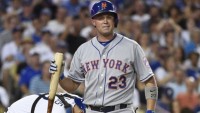
There are many thoughts about this offseason that baffles me. One is this notion that since the Mets offered Daniel Murphy a qualifying offer, it doesn’t matter if the Mets sign a player whose received a qualifying offer. The premise is the two moves cancel each other out.
For the uninitiated, the way the qualifying offer system works, if you sign a player who was offered a qualifying offer by another team, you forfeit your first round pick. In exchange, the team that lost a player has a pick tacked on to the end of the first round.
The only exception to this is if you have a Top 10 pick. In that instance, you forfeit your second round pick. The team losing the player still has a pick added to the end of the first round.
Right now, the Mets have the 24th pick in the 2016 draft. That pick will go higher if someone between 11-23 signs Murphy. In addition, the Mets will get another pick somewhere after the Cardinals and the start of the second round.
Now, I don’t buy the cancel each other nonsense. People are saying moving down a few slots is not a big deal. What’s the difference between picking 24th and say 33rd. That’s flawed thinking for a few reasons.
The first is their focus is misplaced. Say Murphy signs with the Rockies as reported. This means the Mets keep their 24th pick and receive the 31st pick (depending on how many teams lose a player in free agency and their W-L records). That’ll give you two picks in the top say 35. If the Mets forfeit their first round pick, their second pick will be in the 50’s to 60’s.
Now, draft picks aren’t a guarantee, but I’d assume that the player picked at 24 will be thought of as a better player than the player picked at 33 and the player picked 52. In addition, wouldn’t you rather have three picks in the top 60 as opposed to two?
This also brings me to my second point. The Mets farm system is decent, but it’s taken some hits lately:
- There was no 2015 first round pick due to the signing of Michael Cuddyer;
- Trading potential future ace Casey Meisner for Tyler Clippard; and
- Trading an even better pitcher in Michael Fulmer for Yoenis Cespedes.
In essence, the Mets could benefit from bringing in some more talented players. The idea here is to create a flow of prospects to the major league level. If you lose someone, you want to have a player waiting in the wings. If you need to make a trade, you want a well regarded prospect to make the trade you need to make.
Now, if the Mets feel they are one player away, sign that player. The goal is to win the World Series, and the Mets are so close. However, you have to be right. The Mets thought they were close to becoming a contender coming into the 2015 season, so they signed Cuddyer. Turns out they were right, but only after trading for Cespedes and calling up Noah Syndergaard and Michael Conforto.
Moral of the story is you have to be right otherwise you have a $12 million bench player instead of a first round pick who could’ve been a stud. Remember, prospects are always worth more than aging, expensive bench players. That’s why you don’t just sign someone with a qualifying offer attached to him.
You only sign that player if they’d be worth a big prospect because that’s what you’re doing.
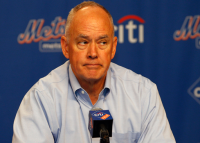
Look the main purpose of this blog is my reflections on the Mets as I’m raising my son to hopefully become a Mets fan. Here’s some advice I’m giving my son in the future:
- Stick to your guns;
- Don’t rush to judgment, and
- Hips Don’t Lie.
We’re now beginning to find out Carlos Gomez’s hip issue was a “just a red herring.” It appears the issues for the Mets might’ve been financial . . . as it always is.
Apparently, the Mets wanted to include Juan Lagares in the deal, who is a better player than Wilmer Flores, due to financial concerns. For their part, the Brewers didn’t want Lagares because of his questionable health. So the Mets then relented and agreed to trade Flores until they didn’t.
The Mets then called the Brewers to include money in the deal. Presumably because the was a fair value deal, the Brewers balked. They have Gomez under contract next year so they don’t need to make a rushed panic decision. Apparently after the overtures for more money were turned down, the Mets discovered Gomez’s hip issue.
Who do we believe? I do think there is some merit to the point that no one went on record. However, Tom Haudricourt is the Brewers beat writer, and accordingly, I presume he knows which sources he can trust and not trust. I don’t know his reputation or his work, so I’m not going to begin besmirching him now.
There may be some merit this came down the next day after Boras is on the rampage over the hip issue. Keep in mind it was Haudricourt, himself, has reported on Gomez’s hip issues. However, if the hip was such an issue, why is Gomez playing everyday?
Now, let’s move onto the Mets. Can they be trusted? This should be met with a loud and resounding NO! Time and time again, this organization has lied about its financial wherewithal only to not spend a dime. They have been so arrogant as to say they need more attendance to increase payroll. They’ve gone so far to question Mets’ fandom that they sent out a loyalty oath.
Furthermore, the Mets needed the Oakland A’s of all teams pick up money in the Tyler Clippard deal. In exchange, the Mets gave up way too much value in a potential future ace in Casey Meisner. It’s absurd. The rumors of Lagares’ potential inclusion in this deal over Flores only fans the flames.
The Mets say there’s money to add a significant contract. I said yesterday adding Gomez doesn’t add a significant contract. First off, Gomez’s contract is a relative bargain. Second, if they acquired Gomez, it would’ve been an excuse as to why they can’t reinvest Colon’s $11 million coming off the books (oh and they’ll pocket $2 million). Third, they’ve said money from Wright’s injury and Mejia’s suspensions that they have not fully reinvested yet.
At this point, I really do not know who to believe. While we have a million reasons not to believe the Mets, the fact remains Gomez had a hip issue that merited an MRI. Maybe the Mets saw a hip issue and thought if the Brewers don’t give us some financial support, we have to walk. I wonder if the Brewers are trying to preserve Gomez’s trade value. I wonder if there is an honest dispute over Gomez’s hip. I wonder what the Mets and Brewers do next.
The one thing I know is true is the Mets are dangerously close to losing their good will with the fan base.

Admittedly, I have been apoplectic over the Tyler Clippard trade. The reason is because the last time the Mets made a trade like this it ended very badly. Faith and Fear in Flushing invoked the infamous John Smoltz and Jeff Bagwell trades. For me, it reminded me of Billy Taylor.
In 1999, the Mets were in competition for the playoffs for really the second time in my life (and second year in a row). I was too young to truly remember this (although my first baseball memory is the Buckner game) or this. After the previous season’s collapse, I was desperate to see the Nets make the playoffs. I was appreciative when Steve Phillips was aggressive at the trade deadline. Notably, he added Kenny Rogers (I still don’t want to talk about it), Shawn Dunston, and Darryl Hamilton (RIP). He also traded for Billy Taylor.
To acquire Billy Taylor, the Mets sent Billy Beane’s A’s Greg McMichael and Jason Isringhausen. At the time, I loved the move. Over a three year stretch, he had 73 saves on mediocre Athletics teams. In 1999, on an A’s team on the rise, he had 26 saves (his peripherals were awful but I didn’t follow such things back then). I was giddy at the prospect of the Mets having a 7-8-9 of Billy Taylor-John Franco-Armando Benitez (this is before we knew he was terrible in October). I didn’t care about the cost. All I wanted was a playoff berth, let alone a World Series.
Boy, was I wrong. In 18 appearances, Taylor had an 8.10 ERA. He was terrible. He didn’t pitch in the postseason. He was gone at the end of the year. He was out of baseball after the 2001 season.
The real cost of Taylor’s 18 innings? Jason Isringhausen’s career. He was once part of the fabled Generation K. In 1999, he was only given five starts. Mostly, he was a seldom used reliever who bounced between Norfolk and New York. He was coming off an elbow injury. At the time of the trade, he had a 6.41 ERA. His star had fallen. While he wasn’t good, Bobby V didn’t want to put him in the bullpen because that was “akin to using an Indy car as a taxi.”
I love Bobby V, but he was proven wrong. In 1999, he would save eight games for the A’s with a 2.13 ERA. That might’ve been helpful as Kenny Rogers walked in the winning run. Since the trade, Izzy accumulated 299 saves (one for the Mets in 1999 and seven for them in 2011). That was a lot to give up for 18 appearances.
Now, I don’t think Tyler Clippard will be as bad as Billy Taylor. He’s a much better pitcher. In actuality, through all of my hand wringing, I have noted Clippard is a quality addition that will help a back of a bullpen that needs it. I think the 7-8-9 of Bobby Parnell-Tyler Clippard-Jeurys Familia could be very good, or at least better than the 1999 version. If the Mets win the World Series, I’ll be thrilled and I won’t care how good Casey Meisner becomes.
However, I shudder at another Mets trade with Billy Beane for a reliever. While I hope one day I’m regaling my son of the 2015 championship season, I’m afraid that I will be explaining how Casey Meisner could have been a Met.
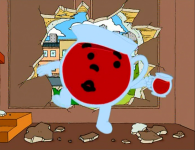
In a vacuum, Tyler Clippard is a great addition to the Mets. As I stated earlier today, the addition of Clippard helps the team. However, when I saw this deal I was angry.
The Mets lied to us once again. Remember when Sandy Alderson said he could add a major contract? Remember how he said that no one believed him? Guess what? We now have our proof that he can’t be believed. You know other than the other times he lied about payroll.
First, the Mets had the Braves take on $500,000 of salary in the Uribe/Johnson trade. In the Clippard trade, the “big market” Athletics took on one-third of Clippard’s remaining salary. With these two trades, the Mets have added the whopping total of $4.5 million in payroll. To date, the Mets have saved $4.43 million in salary due to Wright’s injury. This doesn’t even take into account the savings from the Mejia suspension. Translation: the Mets still have not added payroll.
If you think I’m wrong, keep in mind Billy Beane was dealing with the Mets because he knew the Mets would have to give up a better prospect because the Athletics would have to pick up money.
When the trade went down, Keith Law questioned this trade (I’m putting this mildly). As he states, the Mets trade of Casey Meisner was trading him “[f]or ten cents on the dollar.” As he states, the Mets traded Meisner, a prospect of whom he has a fairly high opinion. He’s not the only one as another outlet called Meisner a future ace. All of this for 20 innings of a reliever with an expiring contract.
Other than losing a future ace, the Mets potentially lost out on Gerardo Parra. Keep in mind a starting OF is always more valuable than a relief pitcher. In fact, Marc Carig reported Meisner was considered a valuable trade chip. So the Mets turned a valuable trade chip into a set up man on an expiring deal? Mike Vaccaro is right, this front office commits malpractice.
Also, I don’t want to hear Meisner is the Mets’ 15th ranked prospect. I don’t care if he was their 100th. You do not judge trades according to the number prospect the player is in your system. You value it according to the value of the player as compared to the value of what you are getting back. The 2015 Mets may be better, but the Mets’ organization is weaker as:
- They traded a valuable trade chip for a reliever;
- They lost a potential future ace;
- They harmed their chances of getting a bat;
- They are now forced to trade higher end prospects if they make another deal; and
- They confirmed they cannot and will not add payroll.
I know Mets’ fans opinion is this is a great deal. I couldn’t disagree more. Maybe I’ll forget about this if they make the playoffs without the OF and LOOGY they needed.